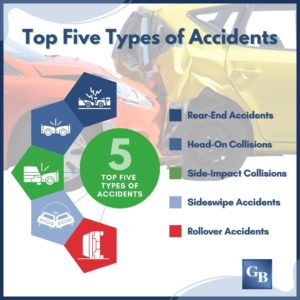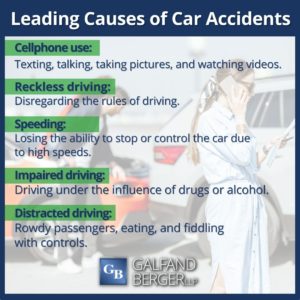There are many different types of car accidents and just as many causes. If you have been injured in any type of accident, it is essential to know who caused the collision because this will help you with a future injury claim. It will also affect the potential outcome of an insurance or other payout.
Head-On Collisions
A head-on collision results from a driver plowing into the front of another vehicle because they cross the centerline, drive in the wrong direction, or lose control of their car. The aftermath is usually devastating because it is difficult for anyone to avoid a vehicle heading straight at them.
Rear-End Accidents
Drivers traveling too quickly or following too closely behind often do not have the time or length of road to avoid hitting the car in front of them. The general rule for stopping in time is to stay one car length behind the vehicle in front of you for every 10 miles per hour. A car traveling 50 miles per hour should remain at least five car lengths behind the car ahead of them to be able to stop without causing a serious rear-end accident.
Distracted drivers also cause one of the more popular types of car accidents, rear-end accidents. Someone who is texting, talking on the phone, eating, or otherwise not paying attention can quickly hit a car that has stopped or slowed in front of them.
Side-Impact Collisions
These collisions happen when one car plows into the side of another vehicle. This type of car accidents may also be called T-bone, angle, or broadside collisions. Side-impact accidents most often occur at intersections when the offending driver does not stop for a red light or at a stop sign. They sail through, often into the side of the car with the right-of-way. Parking lots are also conducive to an angling accident with cars pulling in and out of spaces.

Sideswipe Accidents
This type of accident often happens when one driver tries to change lanes or pass another motorist. The offending driver may not have full clearance for the maneuver and may scrape against the car traveling beside them. Sometimes, sideswipes happen because of a driver’s blind spot. Slippery roads or lanes that are not well marked can also cause drivers to “swipe” against each other.
Rollover Accidents
This is one of the more horrifying types of car accidents. It is terrifying to see a vehicle on its top at an accident scene. Serious injuries can happen and sometimes even death can occur. A rollover generally occurs when a top-heavy car lurches to one side on a steep curve or sharp turn. Hitting a curb, guardrail, or other stationary objects can also cause the vehicle to rollover.
Also, speeding is a culprit. When a driver is going too fast for conditions, they could tip their own car on a curve or slick pavement. If a driver is hit by another vehicle at high speed, the impact could force the car to rollover.
Low-Speed Accidents
An accident that happens at a low speed can still cause serious injuries. For example, a person can suffer whiplash even if someone hits them from behind at a low speed.
High-Speed Collisions
An accident caused by a high-speed driver is almost always going to cause severe vehicle damage and physical injury than other types of car accidents. It is difficult for anyone to fully maintain control of their car when traveling above the speed limit. They will not be able to stop quickly, steer adequately, or safely maneuver around cars ahead or next to them. Speeding is a top reason for car accidents.
Construction Zone Accidents
Construction zones are notorious for accidents. Sometimes, cars come upon construction zones quickly and do not have adequate time to stop or yield. A sudden switch to one lane can cause many accidents as drivers hurry to merge as they enter a construction zone.
Intersection Accidents
Intersections are also common places for car accidents. Drivers might miss a stop sign or traffic light or fail to yield to oncoming traffic. They may enter an intersection when a light is just turning from yellow to red. They may make a left turn in front of oncoming traffic they did not see or thought they could beat. Even right turns at an intersection can cause accidents if the turning driver stops suddenly or does not signal.
Freeway Accidents
Interstates, freeways, expressways, turnpikes, and other roads that see traffic at much higher speeds often see an abundance of accidents as well. When speed limits average 65 miles per hour to 75 miles per hour, drivers may still exceed them.
Motorists trying to make good time on these roads may drive erratically or aggressively. Often, these public roads see delays and traffic jams, causing frustrated drivers to bend the rules which may cause an accident.
Multi-Vehicle Accidents
Multi-vehicle accidents are common on highways with a lot of traffic or roads affected by adverse weather conditions. They happen when one car collides with another, and then the vehicles following or next to them also get involved. They are often caused by drivers traveling too fast, distracted, or not adapting to changing road conditions.
Parking Lot Accidents
Parking lots are prime places for accidents, with drivers pulling in and out, often hurrying to get the best spot or hidden by that huge SUV beside them. Shoppers too may cause accidents as they disregard the cars around them. Parking lots are often not adequately equipped with stop signs or other traffic-control devices. Parking lot accidents can be serious, even when motorists drive at low speeds.
What Causes Car Accidents?
The factors leading up to the accident will also often influence the type of accident, such as speeding, reckless driving, or distracted driving. A negligent driver may have been doing one of the following, causing an accident and often devastating injuries.
Distracted Driving
Distracted driving has been defined as anything that takes a driver’s hands off the wheel, eyes off the road, and mind off driving. Distracted driving is a top cause of accidents. Common distractions include:
- Cellphone use: Cellphones allow people to do many different tasks: talk, text, get directions, watch videos, send emails, post to social media, read books, and take pictures. Unfortunately, some people do all of that while driving, causing serious injury to themselves and others.
- Eating and drinking: Many people see no harm in grabbing food and a drink and continuing their drive. While they may not anticipate the beverage spilling all over the car, it happens, and such a distraction may cause an accident.
- Rowdy passengers: Some people will carry a carful of loud or rowdy friends. The problem is that a car is not the place to act in ways that distract a driver. Loud music, yelling, throwing objects, and horseplay can be bothersome to the driver and may cause a car accident. Drivers should require passengers to sit still and not become a distraction.
- Fiddling with controls: Modern vehicles have so many control buttons, toggles, and knobs that it is almost like driving a computer. Turning on the heat, finding a radio station, moving the seat, programming the navigation system, and similar actions can cause serious accidents. Adjust vehicle controls before setting out or while stopped.

Drowsy Driving
Most people lead busy lives and are unable to get adequate sleep. Some people work odd hours or overnight, leading to fatigue, and a drowsy driver is an unsafe driver. Fatigue causes a delay in reaction time, failure to make good driving decisions, and it can lead to the driver falling asleep at the wheel.
Impaired Driving
Despite national campaigns and frequent reminders, some drivers still get behind the wheel after drinking or using drugs. Impaired driving has many consequences: slow reaction time, bad decision-making, disregard for stoplights or signs, erratic driving, and reckless behavior on the road.
Speeding
One of the leading causes of accidents is drivers who drive above the posted speed limit. In doing so, they may plow through lights, cause other drivers to panic, and lose the ability to stop the car in time or otherwise control their vehicle, all which result in different types of car accidents.
Reckless Driving
Reckless driving is extremely dangerous and takes many different forms. A reckless driver may speed, weave in and out of traffic, tailgate, run red lights or stop signs, race, fail to yield, and commit any number of other driving infractions. A serious accident is often the result of a reckless driver’s behavior.
Weather Conditions
When it is rainy, foggy, snowy, or icy, the conditions of the roads will change. The problem is that drivers often do not change their driving for the new conditions. Slower speeds help drivers maintain control, stop more easily, and avoid accidents.
Who Is at Fault in a Car Accident?
Law enforcement, insurance companies, and lawyers will all determine who is at fault in all the different types of car accident. They will use various tools and technology to pinpoint the negligent driver. However, there could be more than one at-fault party in an accident. The following could all potentially be negligent.
Other Drivers
This is the most likely scenario when an accident involves two or several cars. Drivers, witnesses, vehicle damage, location of vehicles, strewn parts, and road conditions can all help police and lawyers determine the at-fault driver.
Defective Auto Parts
Vehicle recalls happen when a car or parts manufacturer discovers a defective auto part or system. Unfortunately, their discoveries are usually made because someone has been hurt or killed due to the faulty part. Examples include exploding gas tanks, engine fires, dangerous airbags, and failing braking and steering systems.
Those analyzing the cause of an accident, such as lawyers, will often call in experts to determine whether a defective auto part was involved. If so, they will work to hold the proper parties liable while helping plaintiffs recover their damages.
Dangerous Roadways
Municipalities, counties, and states all have a responsibility to maintain roads, whether local, regional, or statewide. They must ensure roads are safe from potholes, ruts, and other conditions that can cause accidents. They are also responsible for adequate signage and cautionary notices. If an accident occurs due to unsafe roads or inadequate signage, responsibility may rest with the party responsible for the road.
What Compensation Might I Be Able to Receive for a Car Accident?
The priority in any vehicle accident is for the injured driver to seek medical care. As they are healing, they should contact a car accident lawyer. A lawyer can help them understand their legal options for recovering compensation for the damages and losses they incur, such as medical bills, lost wages, pain, and suffering, and more.
To start, their lawyer will collect initial information and advise them whether there is a valid legal claim against the other driver’s insurer, their own insurance company, the uninsured or underinsured driver, or a third party, such as a vehicle manufacturer. If there is a valid legal claim, their lawyer will get to work collecting evidence, testimonies, records, documents, video, and camera images, and much more to prove that another party injured them. They will adhere to deadlines, such as Pennsylvania’s two-year statute of limitations, for filing a personal injury claim.
The lawyer will also “value” the claim and consider every penny the accident has cost the plaintiff. They will assess current and future medical bills, loss of wages and loss of earning capacity, emotional damages, property damage, and pain and suffering. Valuing the claim helps decide how much to seek in damages.
They will also negotiate with the appropriate insurer. This is necessary because an insurance company will never offer the total amount needed without extensive negotiation with a lawyer. If your lawyer cannot arrive at a fair settlement offer, they might take the case to court.
Philadelphia Car Accident Lawyers at Galfand Berger LLP Can Help You After Any Type of Collision
If you have been injured in one of these types of car accidents, you deserve justice. One of our Philadelphia car accident lawyers at Galfand Berger LLP can review your case. Call us at 800-222-USWA (8792) or complete our online form to schedule a free consultation. We serve clients throughout New Jersey and Pennsylvania, including Allentown and Harrisburg, from our offices in Philadelphia, Bethlehem, Lancaster, and Reading, Pennsylvania.
 Google Screened
Google Screened
